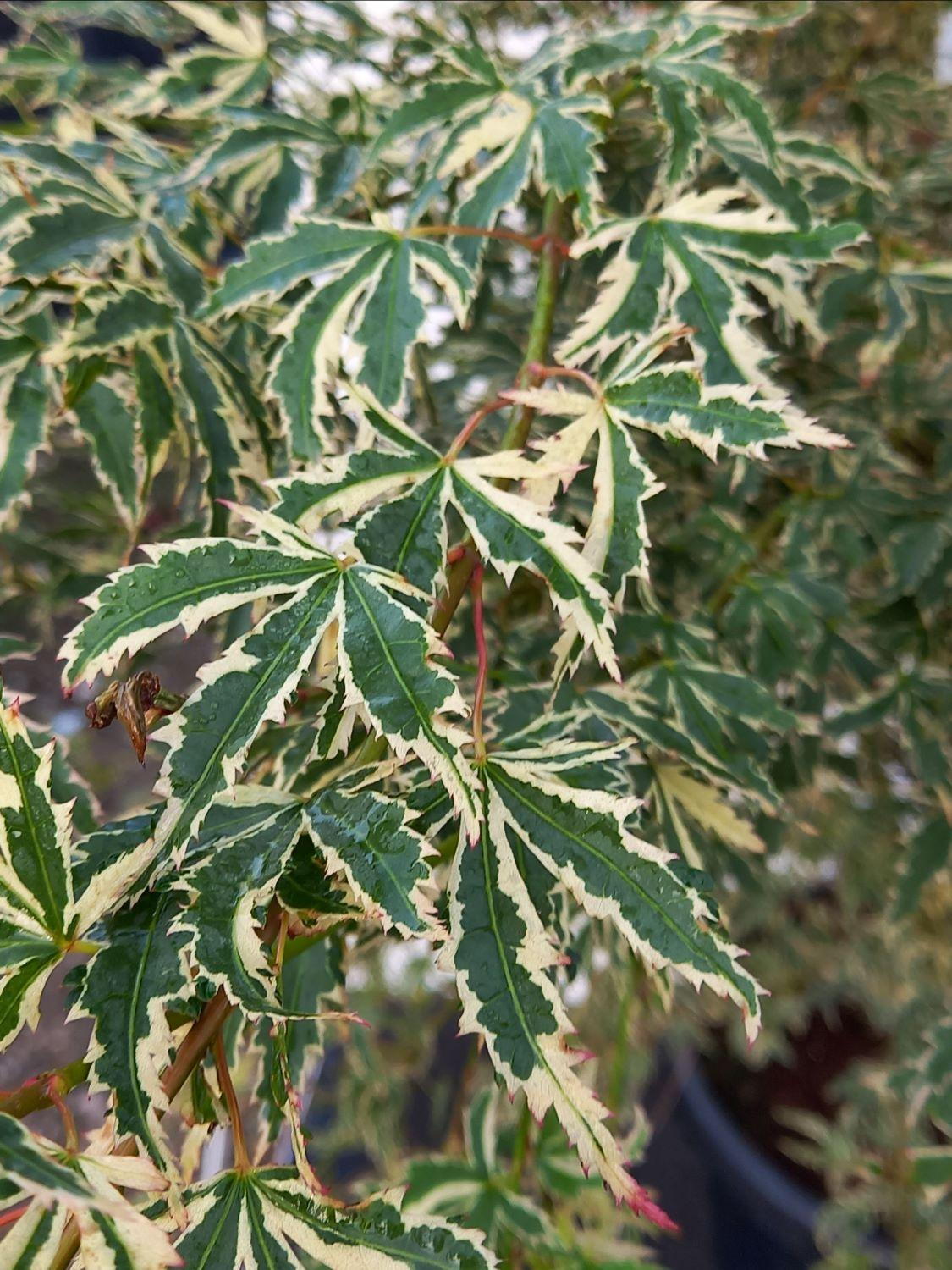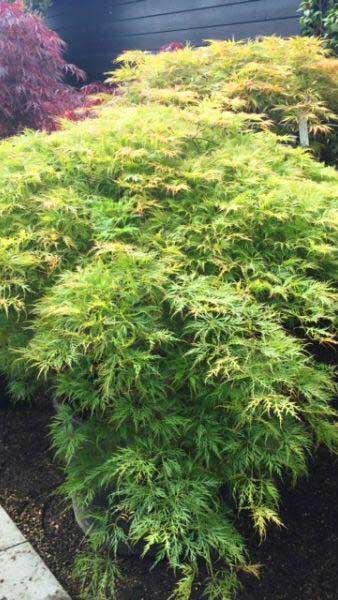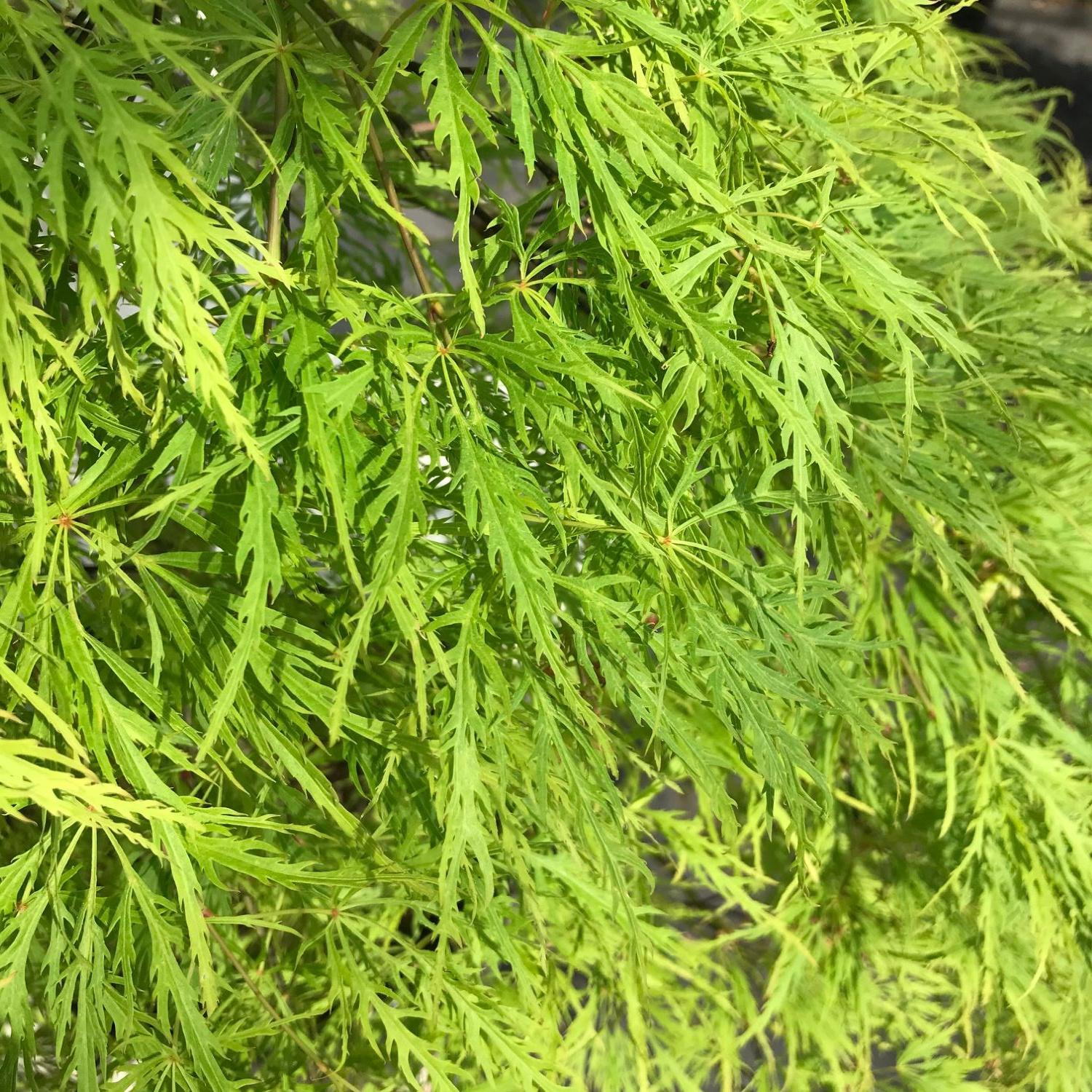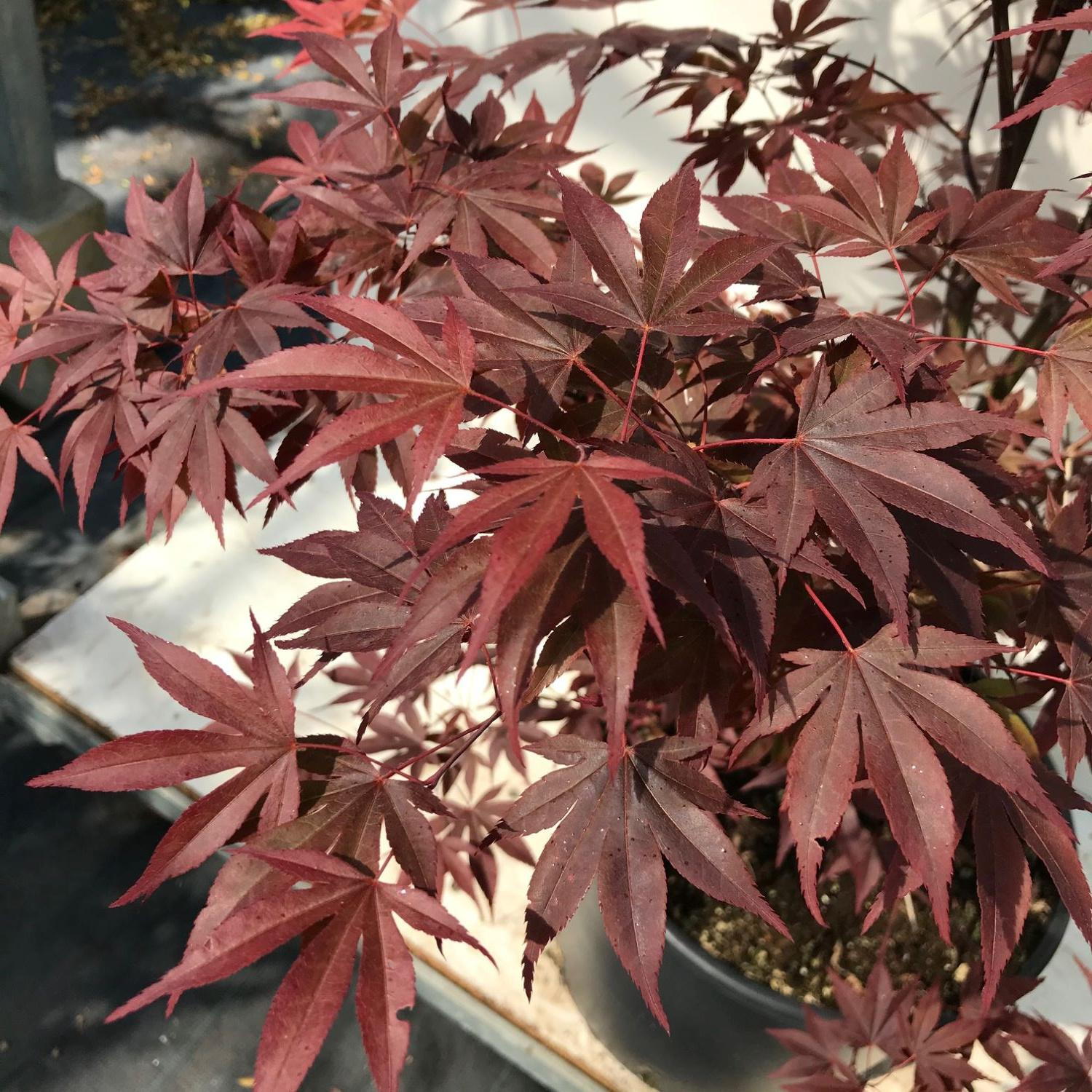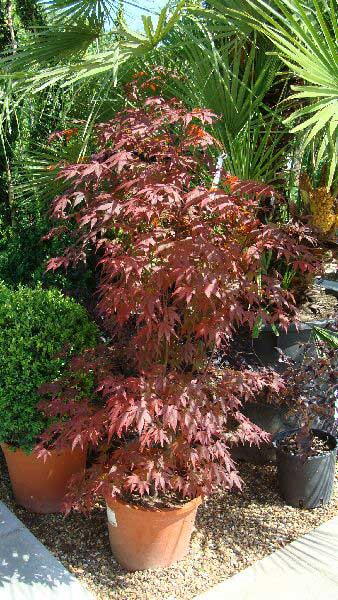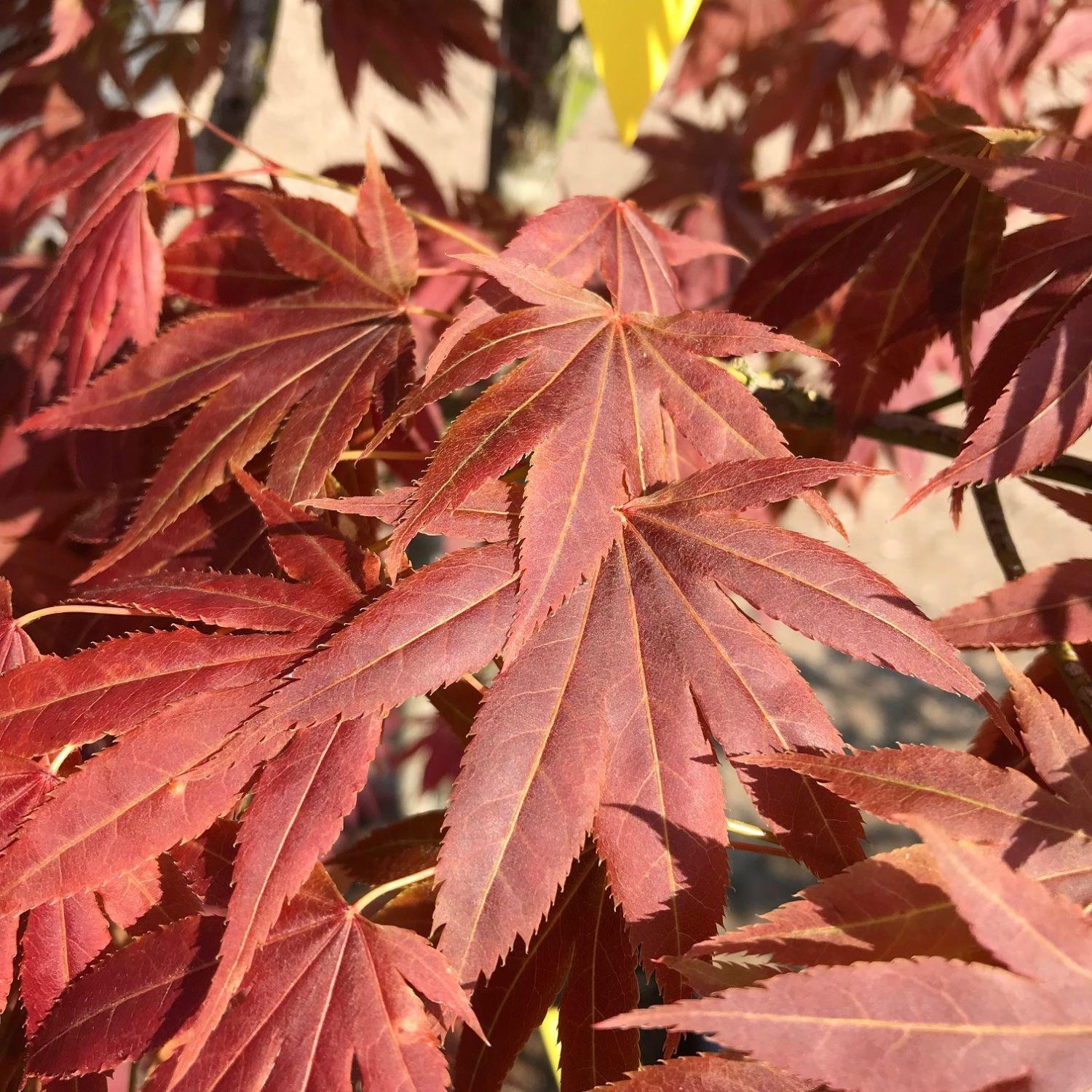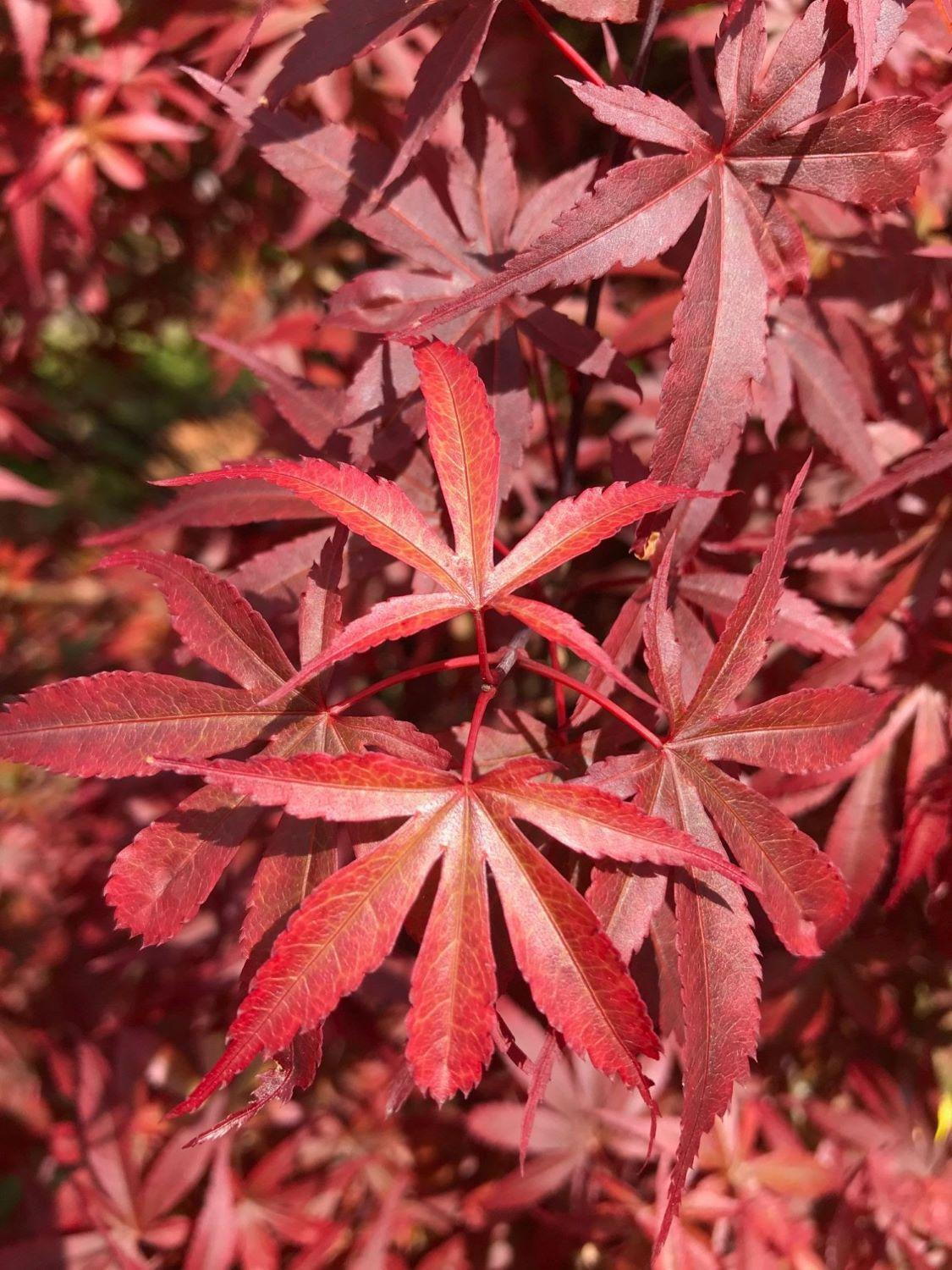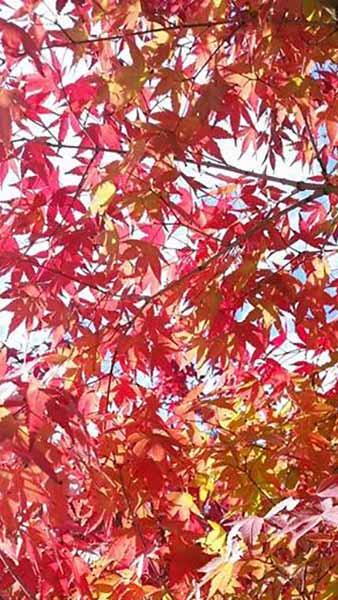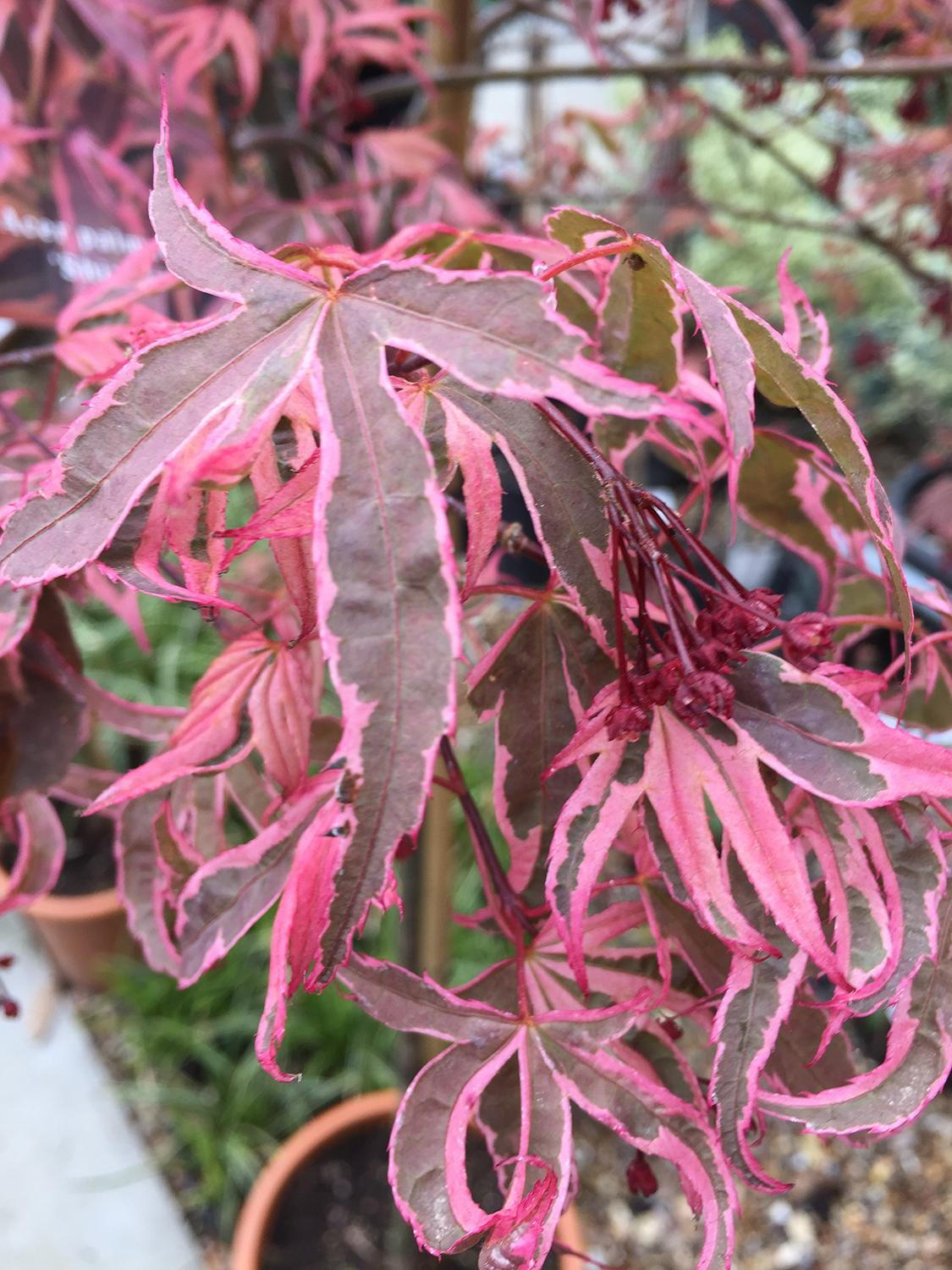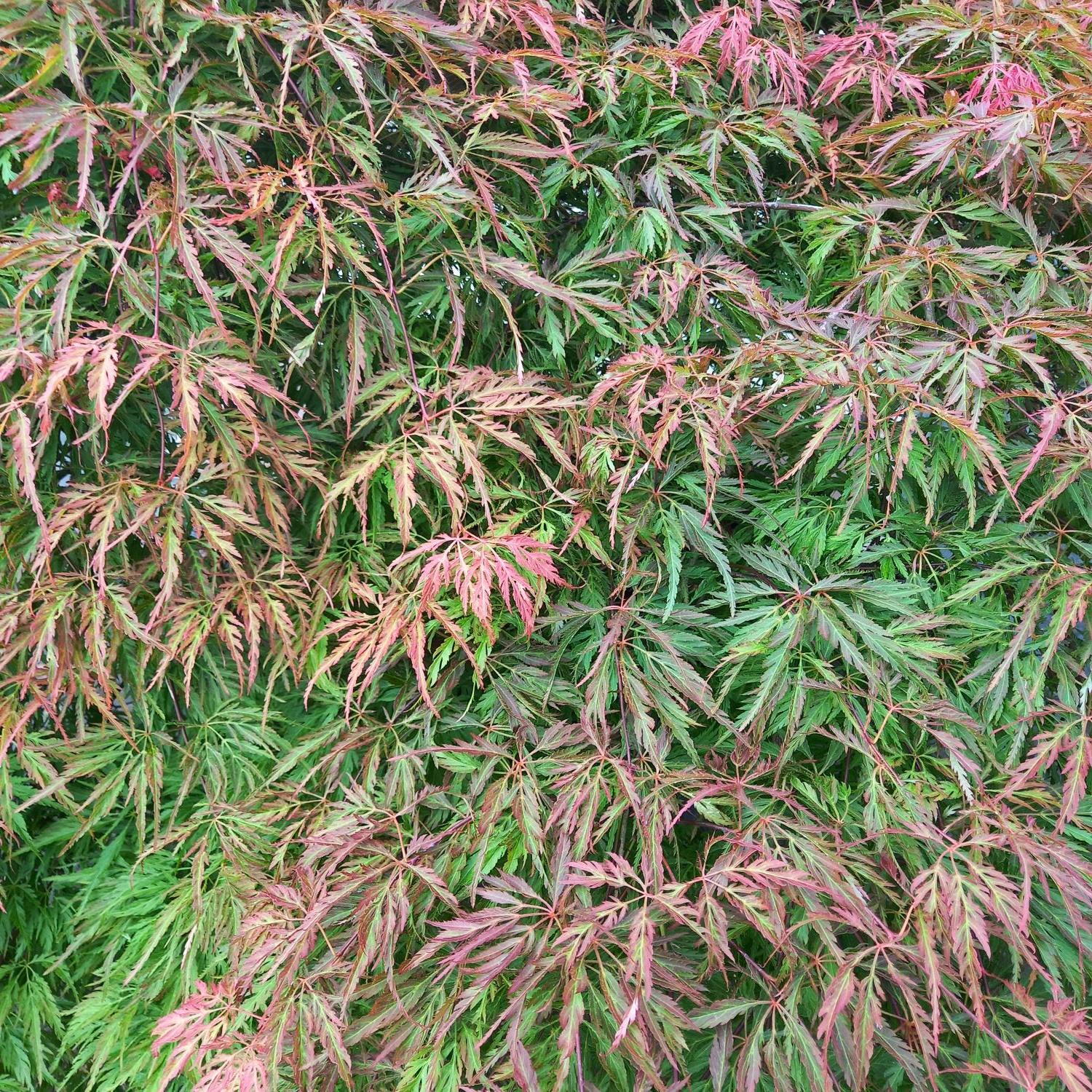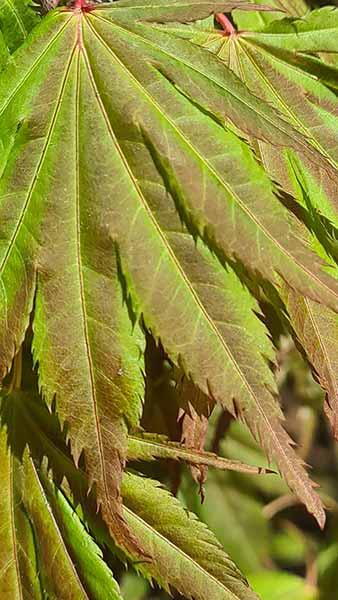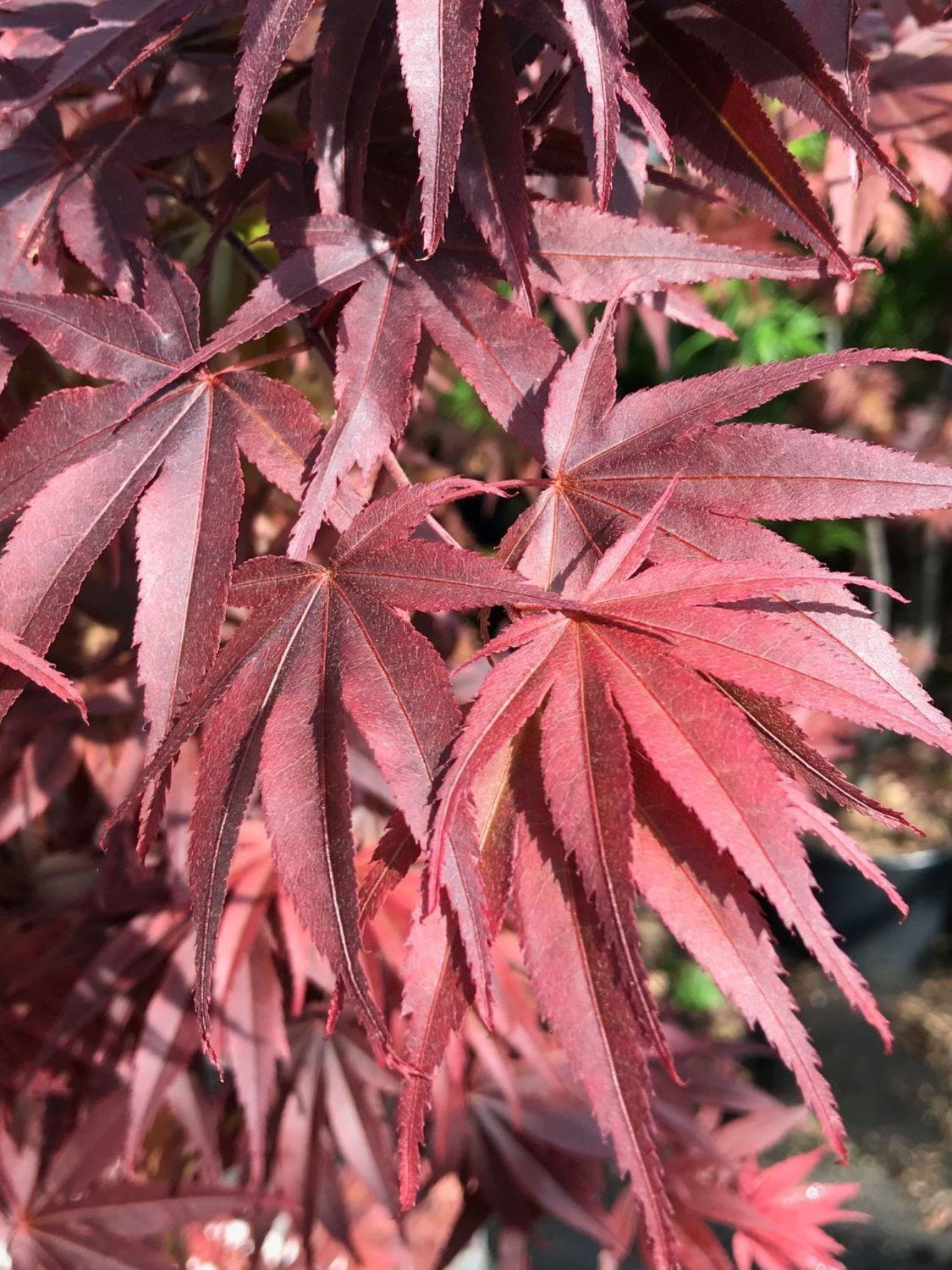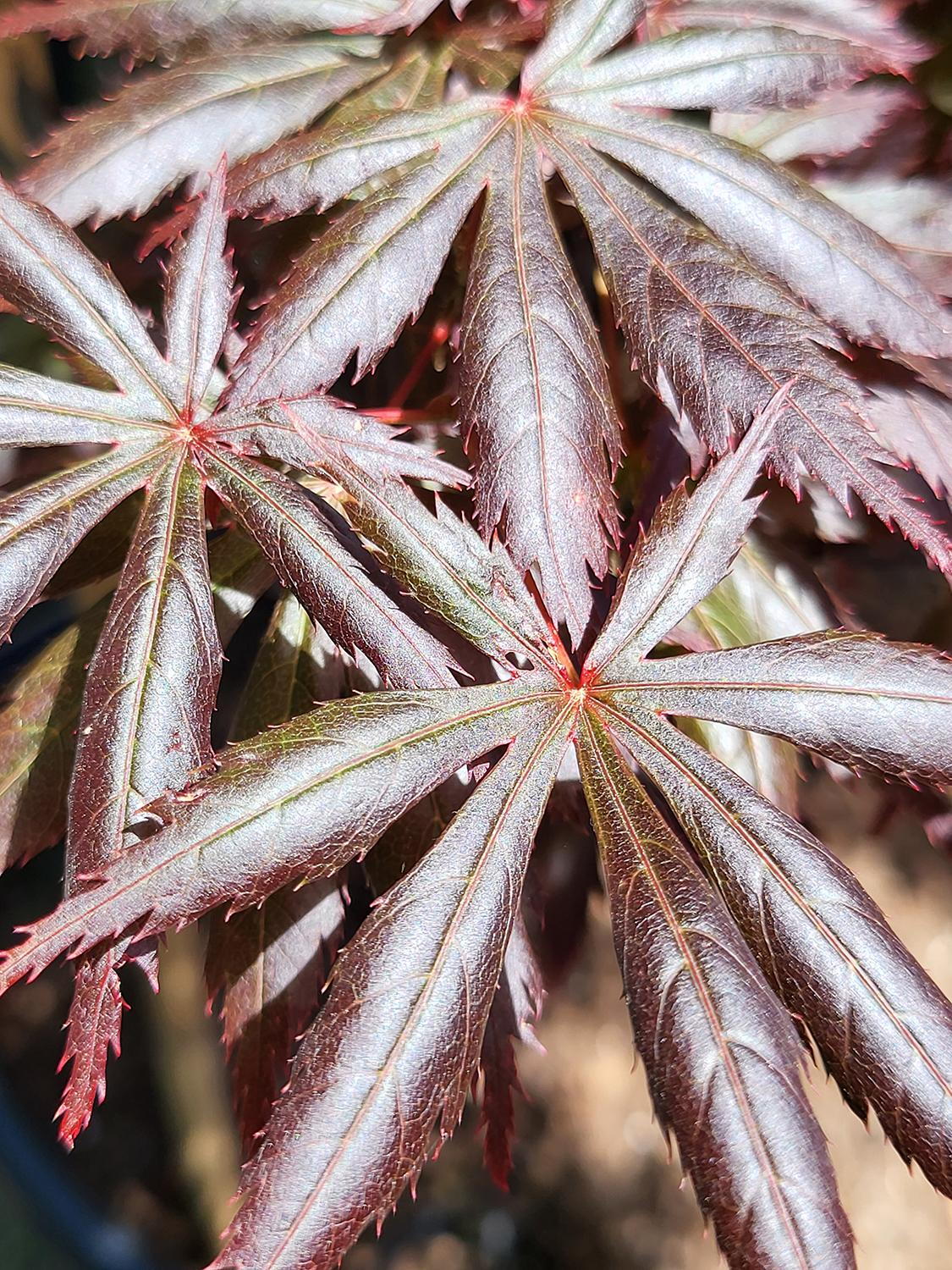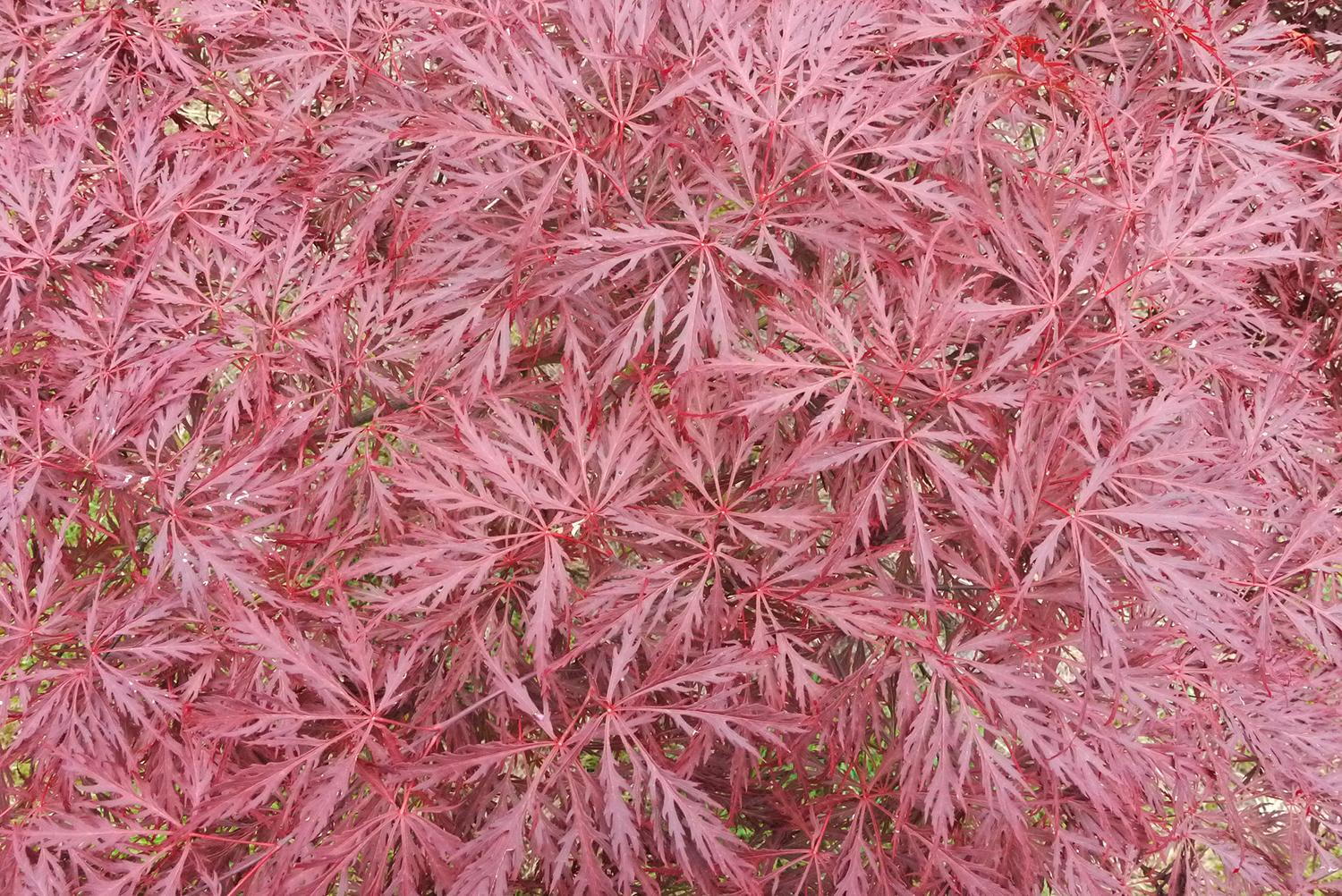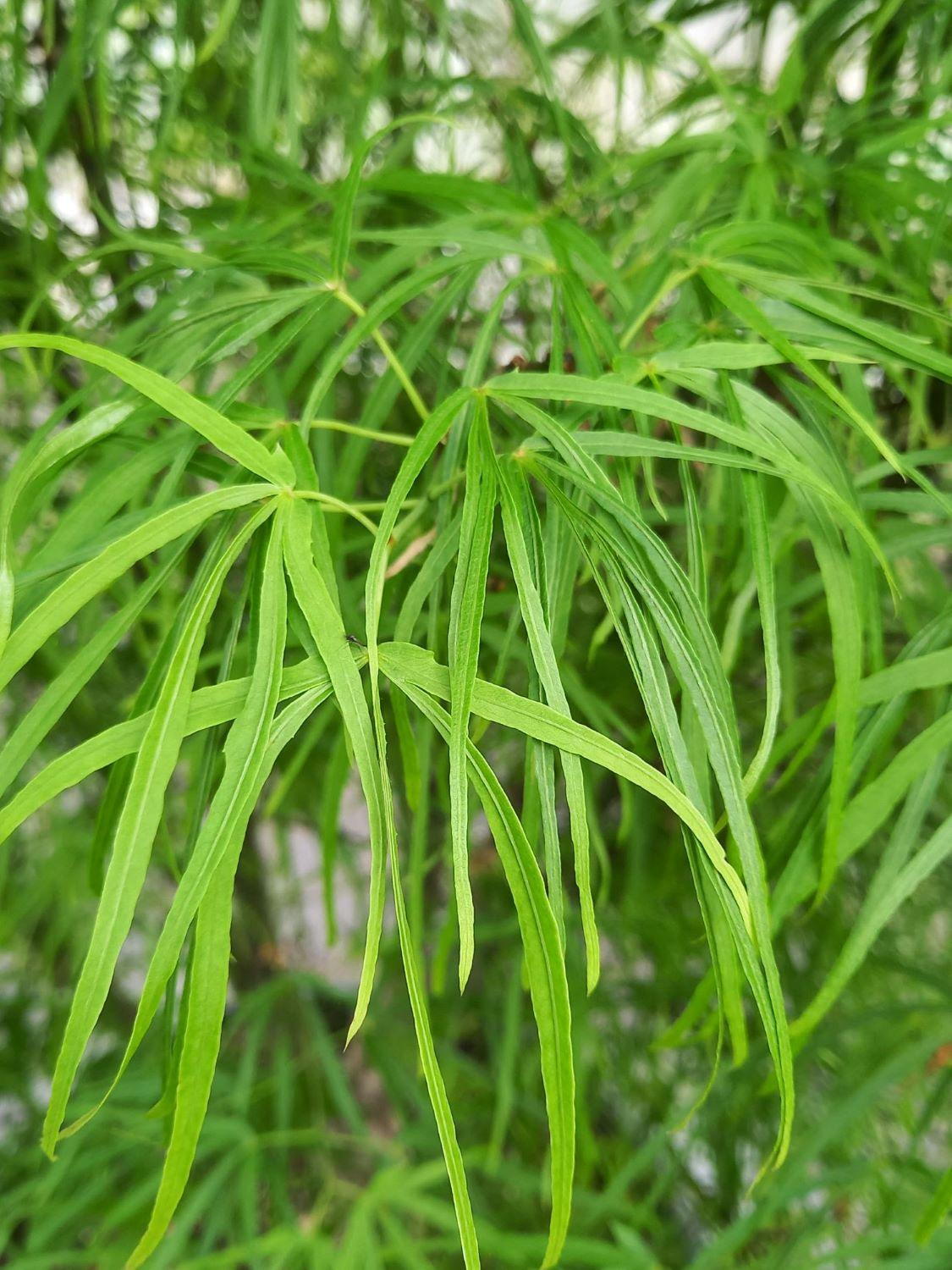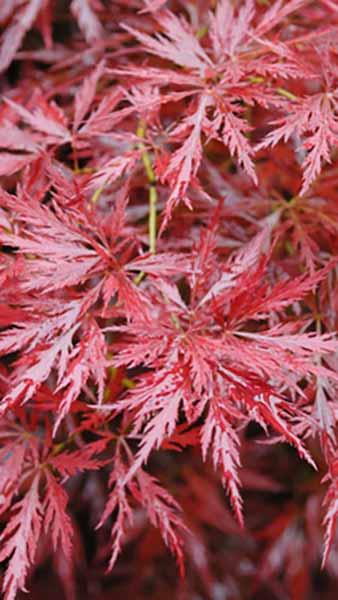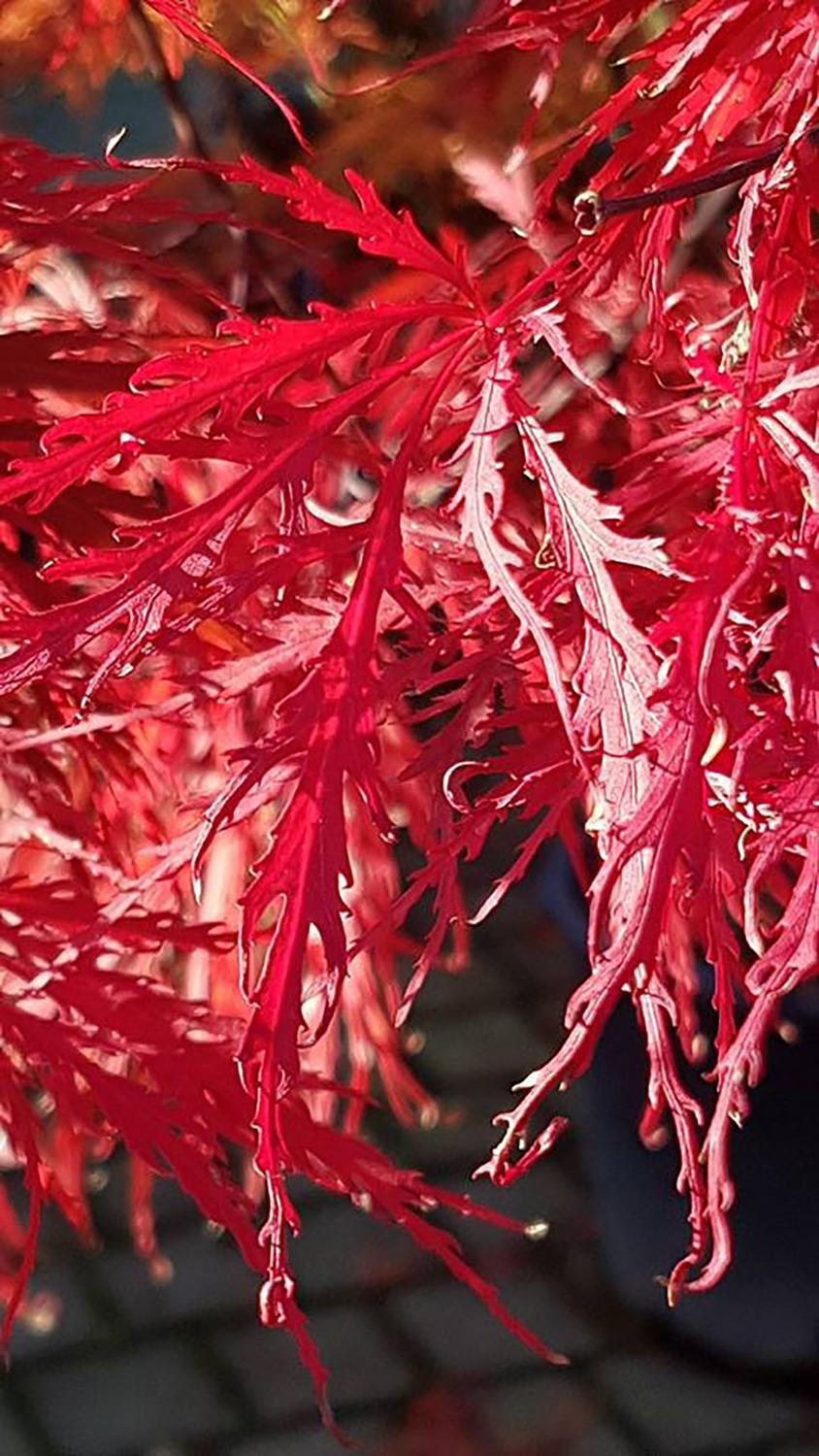Orangeola Japanese Maple. Acer Palmatum Dissectum Orangeola
Acer Palmatum Dissectum Orangeola or Orangeola Japanese Maple, a stunning, small-sized Japanese maple, that will bring its delicate growth habit and brilliant colour to your garden. It has received the RHS Award of Garden Merit. Acer Palmatum Dissectum Orangeola is a deservedly popular variety of Japanese maple, first introduced in the 1980’s. Its architectural weeping shape and beautifully coloured leaves have made Orangeola Japanese Maple a favourite of UK gardeners. In spring, the delicate, deeply dissected leaves emerge a brilliant orange-red, turning to a dark green tinged with bronze-red in the summer, layered over with new leaves with the orange hues of spring. Then, in the autumn, the foliage turns bright red before finally finishing the season as bright orange. Small, purplish-red flowers in spring are followed by red-tinted green winged fruit in summer.Orangeola Japanese Maple is fully hardy in the UK. It is a small tree, slowly growing to a full height of 3 meters and spread of 1-1.5 metres in 10 to 20 years. Once established, it will last for a lifetime. Acer Palmatum Dissectum Orangeola responds well to pruning to maintain an attractive, graceful shape. Choose the spot for your Acer Palmatum Dissectum Orangeola carefully, for once planted, it can stay there happily for decades. Plant in full sun or light shade in a sheltered position, with protection from strong winds. It will grow best in well-drained acid or neutral ph soil with organic matter added, and top-dressed with compost annually. The small size and show-stopping colour of Acer Palmatum Dissectum Orangeola makes it an excellent specimen tree for planting where it will draw attention in your garden. Because of its small size, it is a great choice for container planting on a rooftop terrace, balcony or patio. Since it has a narrow spread of only 1-1.5 meters, it will take up less horizontal space than vertical. Its brilliant colours will provide a beautiful show as the seasons change, and its bare form in winter will add architectural interest. In a small urban garden Orangeola Japanese Maple can look beautiful against a sheltering wall, or in an oriental-themed Japanese garden. In a country cottage garden Acer Palmatum Dissectum Orangeola’s brilliant colours will be a season-long highlight. Wherever you plant Acer Palmatum Dissectum Orangeola, you will have given your garden an instant focal point. This spectacular Japanese maple cultivar’s changing colours will make it a favourite!


